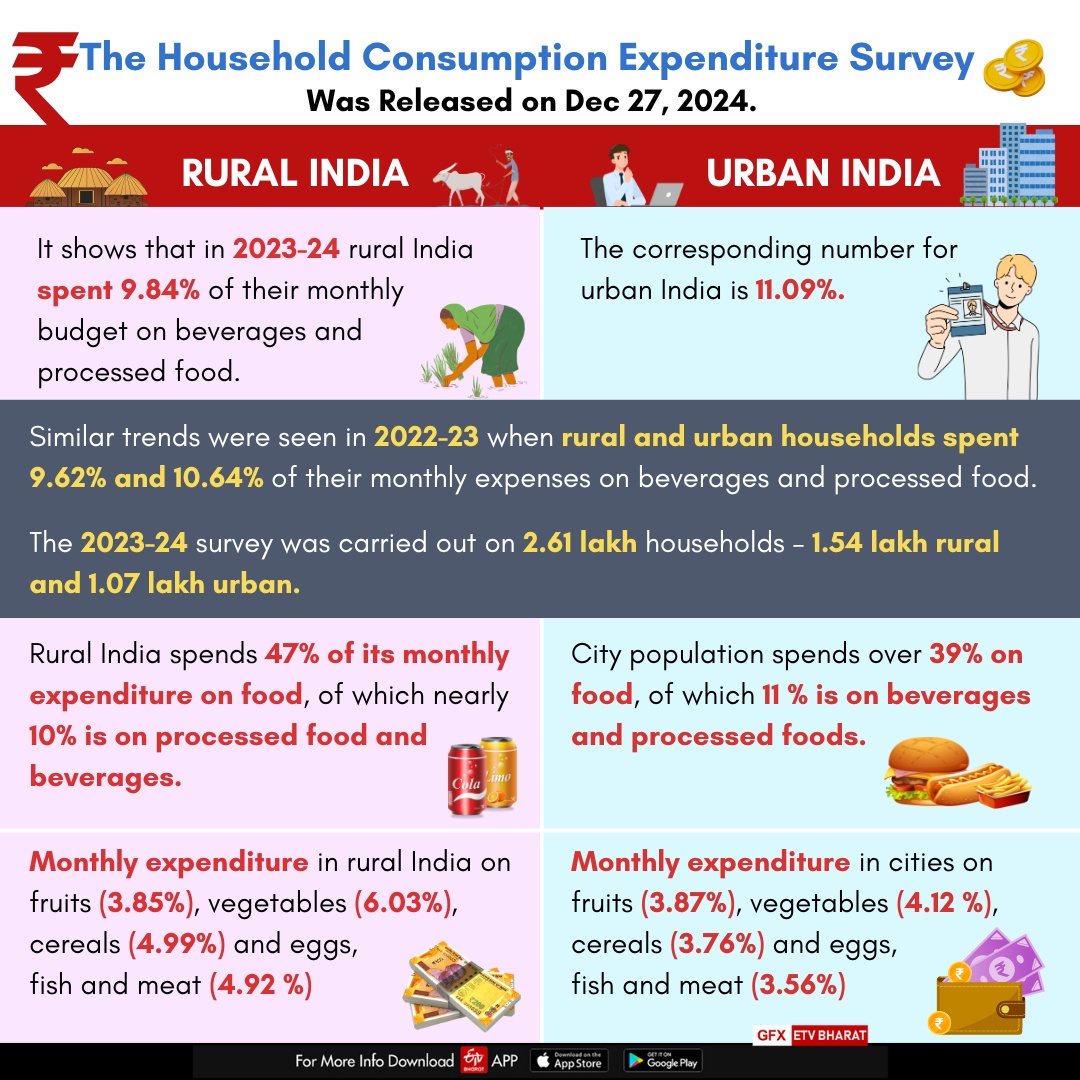By Paritala Purushotham
Hidden inside a new government report (The Household Consumption Expenditure Survey, on consumption expenditure pattern) is a big public health warning – Indians have been spending the maximum on processed food and beverages, which are responsible for a rise in obesity, diabetes and heart diseases.
The Household Consumption Expenditure Survey, released last week (December 27, 2024) showed that in 2023-24 rural India spent 9.84 per cent of their monthly budget on beverages and processed food. The corresponding number for urban India is 11.09 per cent. Similar trends were seen in 2022-23 as well when rural and urban households spent 9.62 per cent and 10.64 per cent of their monthly expenses on such items respectively.
This is for the first time in two decades the monthly budget for consuming food and beverages crossed the 10 per cent mark. The consumption survey reveals the reasons behind the rise in non-communicable diseases in India. Processed food is calorie-dense as it is high in sugar, salt and trans-fat.

The 2023-24 survey was carried out on 2.61 lakh households – 1.54 lakh rural and 1.07 lakh urban. HCES is designed to collect information on consumption and expenditure of households on goods and services. The survey provides data required to assess trends in economic well-being and to determine and update the basket of consumer goods and services and weights used for the calculation of the Consumer Price Index.
Data collected in HCES is also used to measure poverty, inequality, and social exclusion. The Monthly Per Capita Consumption Expenditure (MPCE) compiled from HCES is the primary indicator used for most analytical purposes.
The survey shows rural India spends 47 per cent of its monthly expenditure on food, of which nearly 10 per cent is on processed food and beverages, way above fruits (3.85 per cent), vegetables (6.03 per cent), cereals (4.99 per cent) and eggs, fish and meat (4.92 per cent). The trend is similar among the city population that spends over 39 per cent on food, of which 11 per cent is on beverages and processed foods as against fruits (3.87 per cent), vegetables (4.12 per cent), cereals (3.76 per cent) and eggs, fish and meat (3.56 per cent).
Substitution of nutritious diets by ultra-processed food products and sugar-sweetened beverages is an alarmingly rising trend in both urban and rural populations of India. This is because of falsely promoted aspirational lifestyles by the producers of these products which are highly addictive. (Lower-income families are trying to imitate higher-income households who spend more on processed foods)
More than two decades ago, rural India used to spend just over 4 per cent on such junk food as against 6.35 per cent in urban localities. A big jump occurred between 2004-05 and 2009-10, and since then it has been a steady rise.
Family’s disposable income is being drained by these products with depletion of essential nutrients from the diet. According to Professor K Srinath Reddy, former president Public Health Foundation of India, health consequences are likely to be disastrous, with cardiovascular diseases, diabetes, obesity and cancers surging in numbers across India. Therefore, public policy must provide an effective response to curb these marketed maladies which result from advertised addictions.
When compared with the consumption expenditure surveys of previous years, the latest survey found that the gap between urban and rural households’ consumption patterns and levels is consistently closing year after year.
(Disclaimer: The opinions expressed in this article are those of the writer. The facts and opinions expressed here do not reflect the views of ETV Bharat)



